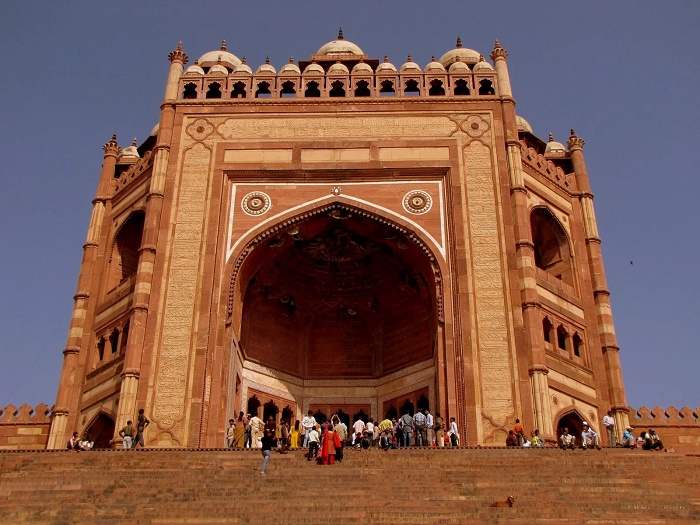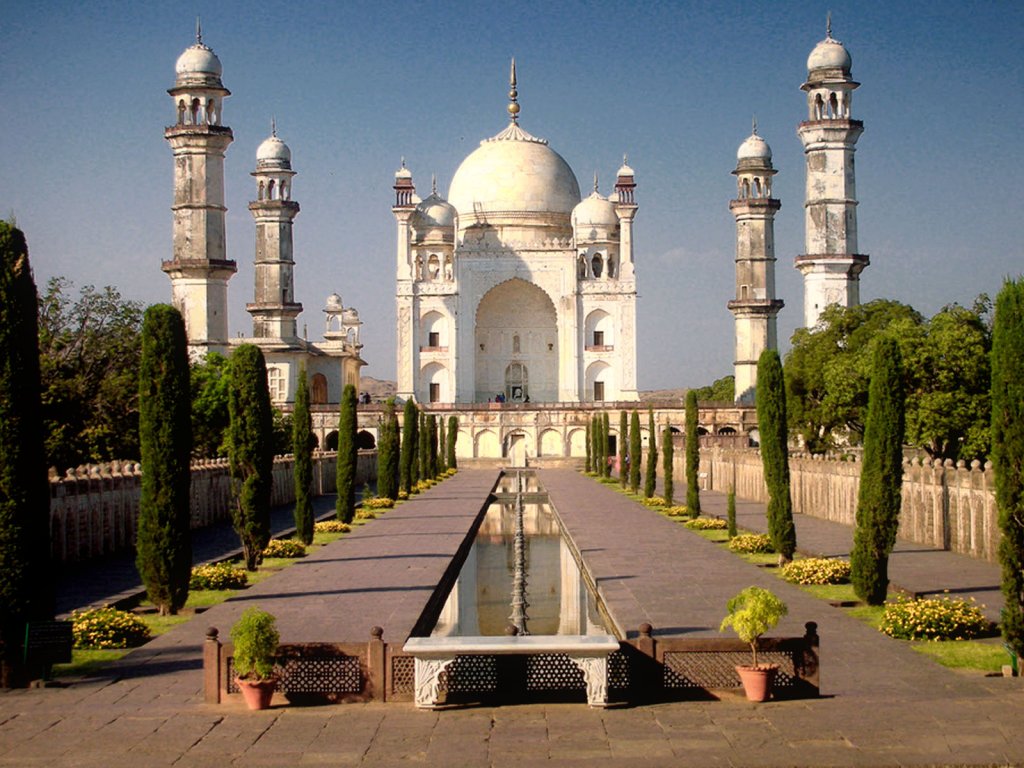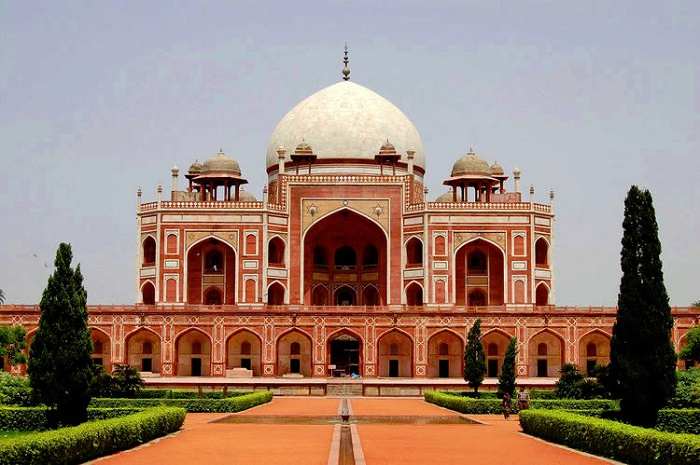
Source : Google photo of the tomb of Akbar in Sikandra
Synopsis : The Mughals were prolific builders of grand mausoleums for themselves and left a unique mark on the landscape of India that underscored their architecture and style to be admired forever. Most of them are now marked as the world heritage sites by the UNESCO and are a major tourist attractions like Taj Mahal .
https://youtu.be/WrDJUC8_jUw
Source : U tube video
The Mughal dynasty that was set up by Babur in 1526 after he defeated the Sultan of Delhi Lodi in the battle of Panipat lasted until the last of the Mughals Emperor Bahadur Shaf Jafar was dethroned by the British in 1857 and sent to exile in Rangoon, Myanmar.
While the Mughals ruled the Indian subcontinent for over 300 years , they were known for their fierce nature and cruelty toward the Hindu population that was the majority who suffered , were forcibly converted to Islam and their temples were destroyed in large numbers to be replaced by mosques. They were massacred wholesale in Delhi and in many other places while their beautiful women were taken away as slaves and some were kept in large harems that the rulers kept.
They attacked any king who did not acknowledge subservience to the Mughals so there were constant battles in many parts of India resulting in great loss of lives of Rajputs Marathas, Gurjars and other warriors who gave a good account of themselves but were eventually overcome by the Mughal army . The brave women facing the choice of slavery and mistreatment in the hands of victors or death committed mass suicide called Jauhar in Rajasthan . My blog called Legend called Padmini can be read here in this context.
Their cruelty had no limits when it came to the struggle for power so they killed their own half brothers , jailed their father like Shahjehan and forced their sisters to celibacy fearing their off springs would challenge the throne in the future.
Shah Jehan killed at least 18 of his relatives in order to consolidate his rule but in the end he died in prison because his son overthrew him to become the king. So their entire history was written in blood because they were so cruel and their lust for power had no limit but by the 1857, their empire had shrunk within the walls of Red Fort in Delhi because they had become hollow from inside. The battle of 1857 was the first attempt by the Indians to become independent so they appealed to the last Mughal emperor Bahadur Shah Jafar to lead but he was weak and had no revenue to organize a large army to fight the British . The rest is history that does not need repeating here.
I would today focus on what the Mughals brought to India in terms of unique architecture and its enduring legacy that continues even today. The Mughals came from dry lands of Uzbekistan and the central Asia so they were very fond of greenery and lush gardens they established throughout their vast empire. They enjoyed these gardens filled with scented flowers, exotic birds like peacocks and water fountains that made them feel as if they were in paradise. The green garden sprayed with cool water of the fountains made them escape the heat of India in summer so they built acres of gardens around their palaces and brought water to it through ingenious system of canals and lift irrigation for which they hired the best hydraulic engineers available.

Source : Google photo of the tomb of Akbar in Sikandra that uses red sand stone with marble embellishment that would be used in other monuments later.

Source : Google photo of Buland Darwaja in Fatehpur Sikri built by Akbar is really grand.
They air conditioned their palaces with double walls through which flowed cold water in channels that cooled the wind entering the palaces. You can still see these channels in their palaces today and wonder at their clever ideas.
They would do anything for their queens so they built Sheesh Mahals ( Palace of mirrors) for them so that one single candle lit could be reflected in millions of tiny mirrors in the ceiling and walls giving the impression of a star studded sky. They spent money lavishly on monuments like Taj Mahal where the queen MumtajMahal is buried and numerous mausoleums as their final resting place amid acres of lush gardens.
They built thrones for themselves of solid gold studded with diamonds and rubies, sapphires and lapis lazuli . One such throne called Takht e Taus or peacock throne of Shahjehan was taken out of India by other looters later so a rich country called India was impoverished by the invaders for centuries who were attracted by its wealth, Mughals being one of them. But while the others came to loot, kill , destroy and leave, the Mughals came to stay and rule for over 300 years.
While they ruled they built massive forts in Delhi, Agra and numerous other places that served them as the seat of power that are so imposing and huge, they will certainly impress any one because there is nothing like it anywhere. India was ruled by numerous kings so there were many kingdoms that were independent and almost always at war with their neighboring kings so they built massive forts from where they ruled. There are hundreds of such forts all over India some of which are in ruins and others maintained by the Archaeological Society of India.
The forts of Jaigarh, Amer, RanThambhore, Jaisalmer, Alwar, Jodhpur , Chittor ,Jodhpur, etc. are just some of them in Rajasthan alone . To see all of them and all other palaces and monuments you will need more than a year of your time but they still stand majestic each with valiant stories of sacrifice and heroism during their long history but I will concentrate on the Mughals today who were Muslims who came from outside India to set up their dynasty that lasted until the British ended it in 1857.
The video above shows some of the great forts and the palaces inside them that are richly decorated with carvings on red sand stone, embedded with white marble designs that became a hallmark of their style and grandeur. The Red Fort in Delhi , the Agra Fort , the Allahabad fort, the city of Fatehpur Sikri, the Taaj Mahal in Agra, the mausoleum of Itmad ud Daula in Agra, the Jama Masjid in Delhi, The shahi masjid in Lahore, the Mausoleum of Akbar in Sikandra, the mausoleum of Humayun in Delhi, the mausoleum of Bibi ka Makbara in Aurangabad, the mausoleum of Khusro in Allahabad, the mausoleum of Jahanara and Jehangir in Lahore, the mausoleum of Anar Kali in Lahore, the mausoleum of Babur in Lahore are just some of the numerous majestic monuments erected during the Mughal rule that stand as a testament to their love for massive, majestic and ornate monuments that still dazzle the visitors today.
The most cruel of them was perhaps Aurangjeb who ruled from 1658-1707 but he died of old age and regrets of being so intolerant of Hindus. He is buried near Aurangabad in a simple grave under the sky and no monument to his name because he was a fundamentalist and pious Muslim who wanted to be buried like a pauper and saved the money he earned making Muslim caps to be used for his burial.

Source : Google photo of Bibi Ka Maqbara in Aurangabad
His queen is buried in a huge mausoleum called Bibi ka Makbara in Aurangabad built by his son that looks somewhat similar to Taj Mahal but very plain and simple in design.

Source : Humayun's tomb in Delhi was perhaps the motivation for Taj Mahal later
The Mughal architecture is not only impressive in its grandeur and elaborate structures that will impress anyone visiting India because nothing like them have ever been built since the end of their empire so each monument is unique in it's design and beauty.
The Koranic verses on the facade of their monuments are inlays of black stone on white marble like in Taj Mahal that increase in size as it reaches the top so that it looks of the same size by the viewer at the ground level. This was a very ingenious and clever way that the visitors may not even be aware of unless told.
Their blood thirst for power, their repressive rule, their greed for territory and constant wars to increase their revenue base , their palace intrigues, their mass slaughter of people who opposed them, their forts where they kept their relatives in prison or tortured them in dungeons, their harems full of captured beautiful women kept as sex slaves, their intolerance toward Hindus and the destruction of Hindu temples all over India are just some of their sins.

Source : Google photo of Taj Mahal in Agra
But looking at their masterpieces like Taj Mahal today, you will only notice the shiny marbles inlaid with precious stones that still glow after hundreds of years and not hear the pain and anguish of those the Mughals ruled so ruthlessly. If the walls of their forts and palaces could talk, they would tell you the stories the historians never wrote about. They would tell you the pain and suffering of those who died in their prisons, the women who were kept in their harem as prisoners and sexually abused , the thousands of poor people who built their palaces and forts but remained poor and died anonymously.
In Lahore you will see the mausoleum of Anarkali who was buried alive for falling in love with the crown prince Salim. If you put your ear on her cold marble grave there, you may still hear her faint shriek of agony as she was being buried alive. Such is the legacy of these grand monuments that endure today. ( Read my blog The price they paid for love here )
https://youtu.be/SwMgAZbLvs0
Source : U Tube video of the Agra fort
This video is on the Agra Fort where ShahJejan was kept as a prisoner by his son Aurangjeb . The video shows the fort , its palaces and its architecture in great detail and remains a masterpiece of Mughal architecture.
Note : My blogs are also available in French, Spanish, German and Japanese languages at the following links as well as my biography. My blogs can be shared by anyone anytime in any social media.
Mes blogs en français.
Mis blogs en espagnol
Blogs von Anil in Deutsch
Blogs in Japanese
My blogs at Wix site
tumblr posts
Blogger.com
Medium.com
Anil’s biography in English.
Biographie d'Anil en français
La biografía de anil en español.
Anil's Biografie auf Deutsch
Anil’s biography in Japanese
Биография Анила по-русскиu
No comments:
Post a Comment